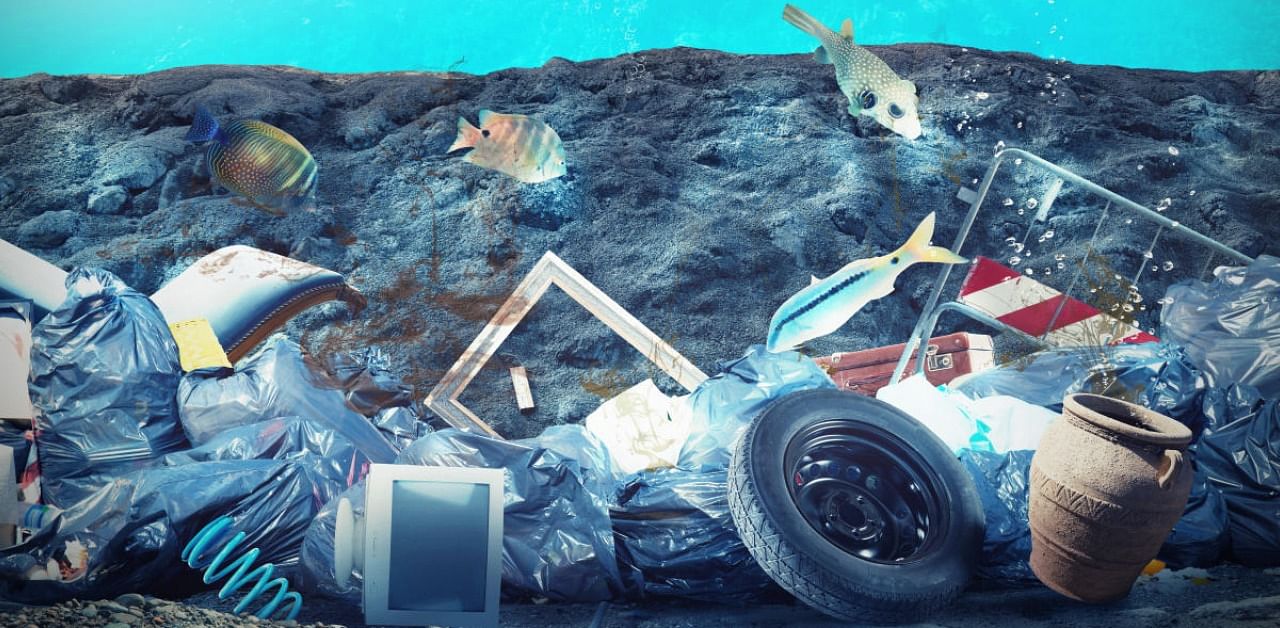
Plastic waste has long been a visible — and growing — problem in oceans around the world, with refuse littering the shorelines of once-pristine beaches, stretching out across a wide expanse of sea in the Great Pacific Garbage Patch and threatening sea life that ingests it.
A new report offers a glimpse of one of the effects below the surface of the ocean: the scale of microplastics building upon the ocean floor. In what researchers called the first such global estimate, Australia’s national science agency says that 9.25 million to 15.87 million tons of microplastics — fragments measuring between 5 millimeters and 1 micrometer — are embedded on the sea floor.
That is far more than on the ocean’s surface, and it is the equivalent of 18 to 24 shopping bags full of small plastic fragments for every foot of coastline on every continent except for Antarctica.
It is an issue that activists have long warned about, even as the fight to clean up the ocean has focused largely on the eradication of single-use plastic products like shopping bags.
The findings were published Monday in a new study by the Commonwealth Scientific and Industrial Research Organization, or CSIRO.
“It really points to the ubiquity of the problem. It is really everywhere, all the time and increasing,” Britta Denise Hardesty, a principal scientist for CSIRO and an author of the study, said in a phone interview Wednesday.
Microplastics are not confined to the ocean. They are also found in air particles and can be spread by wind. A variety of microplastics was even detected in the human gut.
Scientists believe that 4.4 million to 8.8 million tons of plastic enter the sea every year. The Great Pacific Garbage Patch, a gyre of refuse between California and Hawaii that is estimated to be more than twice the size of Texas, carries more than 87,000 tons of trash.
In recent years, hundreds of plastic objects have been found in the bellies of dead whales around the world.
While cities have banned plastic bags and straws, the use of disposable plastic packaging has surged amid the coronavirus pandemic as consumers grow more concerned about hygiene and contamination.
Over time, some plastics break down into smaller pieces and sink into the ocean. More buoyant types of plastic do not sink by themselves and either wash up on beaches or end up in deepwater.
Microbes and mussel colonies growing on floating plastic often cause the entire mass to sink from the added weight.
Hardesty said that microplastics could be ingested by smaller plankton and fish on the seabed. Once eaten by fish, the microplastics can end up in the human food chain.
The aim of the study, Hardesty said, was to put a scale to the problem. She described it as the first such accounting.
Using a robotic submarine, the scientists collected 51 deepwater samples of sand and sediment in the Great Australian Bight in 2017, hundreds of miles from the shore, and determined the global estimate based on the average number and size of the particles.
The study found zero plastic particles in some deep-ocean sediment but up to 13.6 particles per gram in others, a figure up to 25 times larger than what had been found in earlier deep-sea studies of microplastics.
The scientists said they made conservative estimates to take into account the full range of samples. They also eliminated fibres or other materials from their count to rule out the potential contamination of the samples.
Hardesty said that it was important to prevent plastic from ending up in the ocean in the first place. She said she was hopeful that awareness about the pollution would lead to more sustainable policies and shifts in behavior.
“Most of what ends up in oceans are in people’s hand,” she said. “They can see that their behaviour — their actions and purchasing power — is very powerful, and that can result in change.”